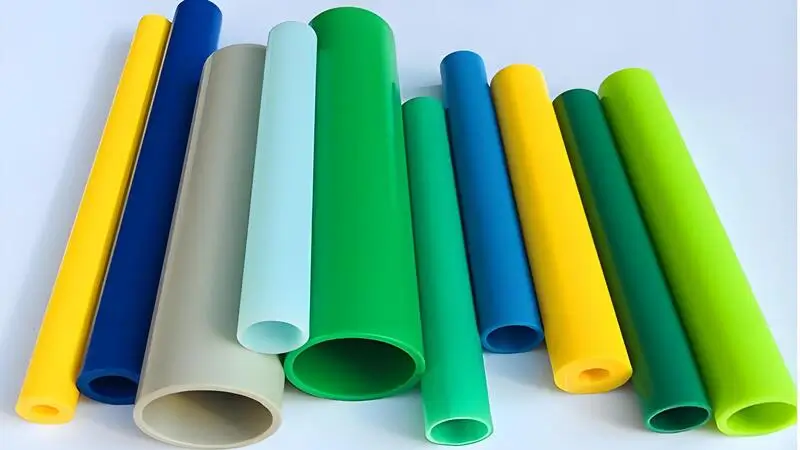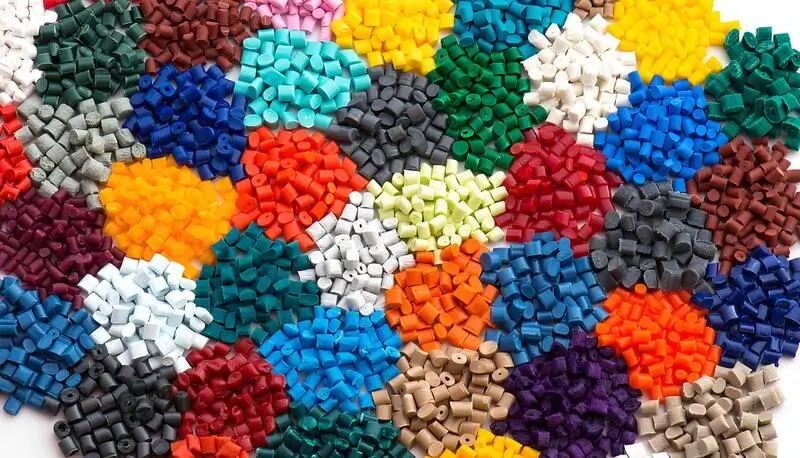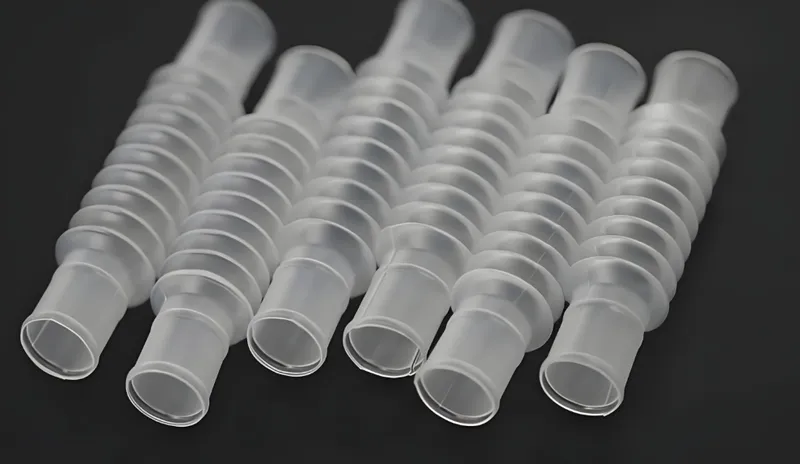
Plastic extrusion is a versatile manufacturing process that transforms raw plastic into continuous profiles like pipes, sheets, and tubes. Selecting the right plastic is critical to ensuring the success of your project, balancing performance, cost, and process efficiency.
Plastic extrusion melts raw plastic and shapes it through a die into continuous profiles, and choosing the right plastic optimizes product performance, durability, and manufacturing efficiency. Whether you're producing packaging films, construction pipes, or automotive components, the plastic you select determines the outcome. This guide explores the essentials of plastic extrusion1 and provides actionable insights for material selection.
Choosing the right plastic can reduce manufacturing costs.True
A plastic with optimal flow properties and processing temperature improves efficiency and lowers energy use.
Plastic extrusion is only suitable for simple shapes.False
Advanced die designs enable extrusion of complex profiles like window frames or multi-layered films.
- 1. What Is Plastic Extrusion and Why Does Material Selection Matter?
- 2. What Are the Common Plastics Used in Extrusion?
- 3. How Do You Match Plastics to Extrusion Applications?
- 4. What Technical Factors Guide Plastic Selection for Extrusion?
- 5. How Does Extrusion Compare to Other Plastic Processes?
- 6. What Are the Steps in the Plastic Extrusion Process?
- 7. How Can a Design Checklist Optimize Plastic Extrusion?
- 8. What Technologies Relate to Plastic Extrusion?
- 9. Conclusion
What Is Plastic Extrusion and Why Does Material Selection Matter?
Plastic extrusion is a foundational process in manufacturing, but its success depends heavily on the plastic chosen. Understanding the process and the role of material selection2 sets the stage for informed decision-making.
Plastic extrusion involves melting raw plastic and shaping it into continuous profiles through a die, with material selection driving performance, cost, and process compatibility. This method excels at producing long, uniform parts, but the plastic must suit both the process and the application.

What Defines Plastic Extrusion?
Plastic extrusion is a high-volume technique where raw plastic pellets are melted and forced through a shaped die to form continuous profiles, such as pipes or sheets. The process is efficient and widely used across industries like construction and packaging, offering a cost-effective way to produce consistent shapes.
Why Is Material Selection a Game-Changer?
The plastic you choose affects everything from processing ease to final product quality. Each plastic has unique properties—melting point, strength, flexibility—that must align with your project’s goals. For instance, a flexible plastic like polyethylene (PE) suits packaging, while rigid polyvinyl chloride (PVC) excels in construction. A poor choice can lead to defects, inefficiencies, or a product that fails its purpose.
How Does Plastic Choice Influence the Process?
Different plastics demand specific extrusion conditions. Polypropylene (PP) requires higher temperatures than PE, and PVC needs stabilizers to avoid degradation. The melt flow index (MFI)—how easily a plastic flows when melted—must match the die design to prevent issues like uneven thickness. Matching the plastic to the process ensures smooth production and a high-quality outcome.
Material selection impacts both process and product.True
The right plastic ensures efficient extrusion and meets application needs.
All plastics behave the same during extrusion.False
Each plastic requires unique settings due to differences in melting point and flow behavior.
What Are the Common Plastics Used in Extrusion?
Knowing your options is the first step to picking the right plastic. Each material offers distinct properties suited to specific applications and processing needs.
Common extrusion plastics3 include polyethylene (PE), polypropylene (PP), polyvinyl chloride (PVC), polystyrene (PS), and acrylonitrile butadiene styrene (ABS), chosen for their strength, flexibility, and cost-effectiveness. These plastics dominate due to their extrusion compatibility and versatility.

Polyethylene (PE): The Flexible Favorite
PE is a go-to plastic for its flexibility, affordability, and low melting point (120-180°C). Low-density PE (LDPE) is ideal for films and bags, while high-density PE (HDPE) suits pipes and containers. Its excellent flow properties make it a breeze to extrude, especially for lightweight applications.
Polypropylene (PP): Tough and Adaptable
PP offers strength and chemical resistance4, with a higher melting point (160-220°C). It’s perfect for packaging, automotive parts, and textiles. Though it demands more heat than PE, its durability makes it a strong contender for demanding uses.
Polyvinyl Chloride (PVC): The Durable Standout
PVC shines in construction for pipes and window frames, thanks to its rigidity and corrosion resistance. Processed at 160-200°C, it requires stabilizers to handle heat, but its versatility—rigid or flexible—makes it a staple in extrusion.
Polystyrene (PS): Clear and Affordable
PS is prized for its clarity and low cost, extruding well at 180-240°C. It’s common in disposable trays and packaging, offering great flow for thin sheets, though it’s less durable than other options.
Acrylonitrile Butadiene Styrene (ABS): Strong and Resilient
ABS combines toughness and impact resistance, ideal for automotive parts and electronics housings. It processes at higher temperatures (220-260°C) but delivers a robust balance of strength and extrudability.
Each plastic has a specific processing temperature range.True
PE extrudes at 120-180°C, while ABS needs 220-260°C.
PE is the only plastic used in extrusion.False
PP, PVC, PS, and ABS are also widely extruded for various purposes.
How Do You Match Plastics to Extrusion Applications?
The right plastic aligns with your project’s end-use requirements, from flexibility to durability, while fitting the extrusion process.
Matching plastics to applications means evaluating strength, flexibility, and environmental resistance to meet industry-specific needs effectively. Here’s how this plays out across key sectors.

Construction: Strength and Stability
Construction favors plastics like PVC for pipes and window frames due to its rigidity and weather resistance. PE might be used for flexible tubing, offering durability where adaptability is key.
Packaging: Lightweight and Cost-Effective
Packaging leans on PE and PP for films and bags. PE’s flexibility suits single-use items, while PP’s strength works for heavier-duty needs. PS is a go-to for clear, disposable containers.
Plumbing: Resistance to Pressure and Chemicals
Plumbing relies on PE and PP for pipes and hoses, valuing their chemical resistance and pressure tolerance. HDPE stands out for high-pressure water systems.
Automotive: Durability Under Heat
Automotive applications use ABS and PP for trims and seals, leveraging their strength and heat resistance to meet the demands of vehicle components.
PVC is a top choice in construction for its rigidity.True
Its durability and corrosion resistance make it ideal for pipes and frames.
One plastic fits all industries.False
Industry needs vary, requiring tailored plastic choices.
What Technical Factors Guide Plastic Selection for Extrusion?
Choosing a plastic involves technical considerations that ensure smooth processing and a quality product beyond just application fit.
Key factors include melt flow index (MFI)5, thermal stability6, cost, and extruder compatibility, all shaping process efficiency and product quality. Let’s dive into these essentials.

Melt Flow Index (MFI): Flow Matters
MFI measures how easily a plastic flows when melted. High-MFI plastics like PE excel in thin-walled parts, while lower-MFI options like PP suit thicker profiles. Matching MFI to die design prevents clogs or defects.
Thermal Stability: Heat Endurance
Plastics must withstand extrusion temperatures without degrading. PVC needs stabilizers for stability at 160-200°C, while PP and ABS handle higher heat better, reducing processing risks.
Cost and Availability: Practical Priorities
PE and PP are cost-effective and widely available, ideal for high-volume runs. ABS or specialized plastics cost more but may be justified for specific performance needs. Balance budget with functionality.
Extruder Compatibility: Equipment Fit
Plastics require specific settings—temperature, screw speed—that your extruder must support. ABS demands higher heat than PE, so ensure your setup aligns with your material choice.
Thermal stability is critical for PVC.True
Without stabilizers, PVC degrades under heat during extrusion.
Higher MFI always improves extrusion.False
It aids flow but may weaken mechanical properties.
How Does Extrusion Compare to Other Plastic Processes?
Comparing extrusion to alternatives clarifies when it’s the best choice and how plastic selection ties into that decision.
Extrusion excels at continuous profiles, unlike injection molding for complex parts, offering cost advantages for uniform, high-volume shapes. Here’s how it stacks up.

Extrusion vs. Injection Molding
Extrusion creates continuous profiles like pipes, while injection molding produces discrete, intricate parts like toys. Extrusion wins for long-run simplicity; injection molding suits complexity.
Extrusion vs. Blow Molding
Blow molding crafts hollow items like bottles, while extrusion handles solid profiles. Choose based on whether your part needs to be hollow or solid.
Extrusion vs. Thermoforming
Thermoforming shapes extruded sheets into trays, relying on extrusion to produce those sheets. Extrusion is the upstream process here. Understanding the extrusion process7 highlights how plastic choice impacts each stage, from melting to shaping.
Extrusion can produce complex shapes with advanced dies.True
Multi-lumen tubing and layered films are possible with specialized designs.
Extrusion is always cheaper than injection molding.False
Injection molding may be more cost-effective for small, complex runs.
What Are the Steps in the Plastic Extrusion Process?
Understanding the extrusion process highlights how plastic choice impacts each stage, from melting to shaping.
Plastic extrusion includes feeding pellets, melting, shaping via die, cooling, and finishing, with each step influenced by the plastic’s properties. Here’s the breakdown.

Feeding and Melting: From Pellets to Molten Plastic
Pellets enter a hopper, then melt via a screw and heaters. The plastic’s melting point—low for PE, higher for ABS—dictates temperature settings to avoid under- or overheating.
Shaping: Die Design in Action
Molten plastic flows through a die, where MFI ensures even distribution. A mismatched plastic can cause uneven profiles or blockages.
Cooling and Finishing: Setting the Form
The extruded shape cools via water or air, solidifying its form. Plastics like PP need controlled cooling to avoid warping, followed by cutting or trimming to spec.
Cooling ensures dimensional stability.True
Proper cooling prevents deformation in the final product.
All plastics use identical extrusion settings.False
Unique melting points and flow properties demand tailored conditions.
How Can a Design Checklist Optimize Plastic Extrusion?
A checklist ensures your design and plastic choice align with extrusion’s strengths, avoiding common pitfalls.
A design checklist confirms a constant cross-section, smooth transitions, and a plastic with suitable flow and strength properties. Here’s how to apply it.

Maintain a Constant Cross-Section
Extrusion thrives on uniformity. Designs with consistent thickness along their length work best; varying sections may need another process.
Smooth Out Sharp Corners
Sharp angles disrupt flow, risking weak spots. Opt for rounded transitions and a high-MFI plastic for intricate dies.
Match Plastic to Process Needs
Choose a plastic with the right MFI and mechanical properties for your part’s function and the extruder’s capabilities.
A checklist prevents extrusion issues.True
It flags problems like flow disruptions early.
Extrusion suits any design.False
It’s optimized for consistent cross-sections, not complex variations.
What Technologies Relate to Plastic Extrusion?
Extrusion connects to a broader manufacturing ecosystem, influencing and influenced by related processes.
Related technologies include pellet production upstream and finishing or co-extrusion8 downstream, enhancing extrusion’s scope. Let’s explore these links.

Upstream: Pellet Manufacturing
Plastic pellets are made via polymerization, often with additives like stabilizers, setting the stage for extrusion quality.
Downstream: Finishing Touches
Post-extrusion, parts may be cut, drilled, or assembled. Pipes, for instance, get fittings or precise lengths.
Advanced Techniques: Co-Extrusion
Co-extrusion layers multiple plastics—like a soft core and hard shell—in one profile, expanding design possibilities.
Co-extrusion enables multi-material profiles.True
It combines plastics for varied properties in one part.
Extrusion is isolated from other processes.False
It’s part of a chain from pellet production to finishing.
Conclusion
Selecting the right plastic for extrusion is a strategic choice that blends application needs, process demands, and cost factors. By mastering the properties of plastics like PE, PP, PVC, PS, and ABS, and aligning them with extrusion’s technical requirements, you can achieve efficient production and superior products. Use this guide to navigate your options and optimize your next extrusion project.
-
Explore this link to gain a deeper understanding of plastic extrusion, its processes, and applications in various industries. ↩
-
Understanding material selection is crucial for optimizing product performance and manufacturing efficiency. Discover more here. ↩
-
Learn about the different types of extrusion plastics and their specific applications to make informed choices for your projects. ↩
-
Exploring chemical resistance helps in choosing the right materials for applications exposed to harsh environments, enhancing durability. ↩
-
Understanding MFI is crucial for selecting the right plastic for your project, ensuring optimal flow and quality during extrusion. ↩
-
Thermal stability is key to preventing degradation during processing, ensuring the integrity and performance of the final product. ↩
-
Exploring the extrusion process helps you grasp how plastic properties affect production, leading to better design and material choices. ↩
-
Co-extrusion offers innovative design possibilities by layering different plastics, making it a valuable technique in modern manufacturing. ↩








